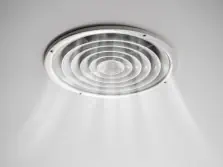Can gas ducted heating cause carbon monoxide poisoning?
Yes if the burn isn’t clean, a gas heater carbon monoxide leak can follow. Incomplete combustion happens when air to gas balance is off, burners are dirty, gas pressure is wrong, or the heat exchanger has cracked. In a sealed room those fumes build fast, putting everyone inside at risk.
Issues that can lead to carbon monoxide leaks include poor air-to-gas ratios, obstruction of the flame, incorrect gas operating pressures, bad burners, or cracks in the heat exchanger. When such leaks take place in an enclosed space, dangerous levels of carbon monoxide can build up.
Gas Heater Carbon Monoxide - What to Watch For
- Flame turns yellow, orange, or “lazy” instead of sharp blue
- Pilot keeps snuffing out
- Soot, rust, or hairline cracks around the unit
- Unusual smells, headaches, or nausea while the heater runs
Switch the heater off and call a licensed tech if you spot any of these.
Stay Safe
- Service every two years (yearly for older units)
- Do a quick visual check before winter, then monthly
- Keep return air vents clear and the room ventilated
Browse Gas Ducted Heater Options
See high efficiency models, upgrade deals, and servicing packages on our Gas Ducted Heater page. Learn more about our gas ducted heating range.
View Air Conditioning Articles







 Dealer Only Brands: Daikin, Breezair, etc.
Dealer Only Brands: Daikin, Breezair, etc.
